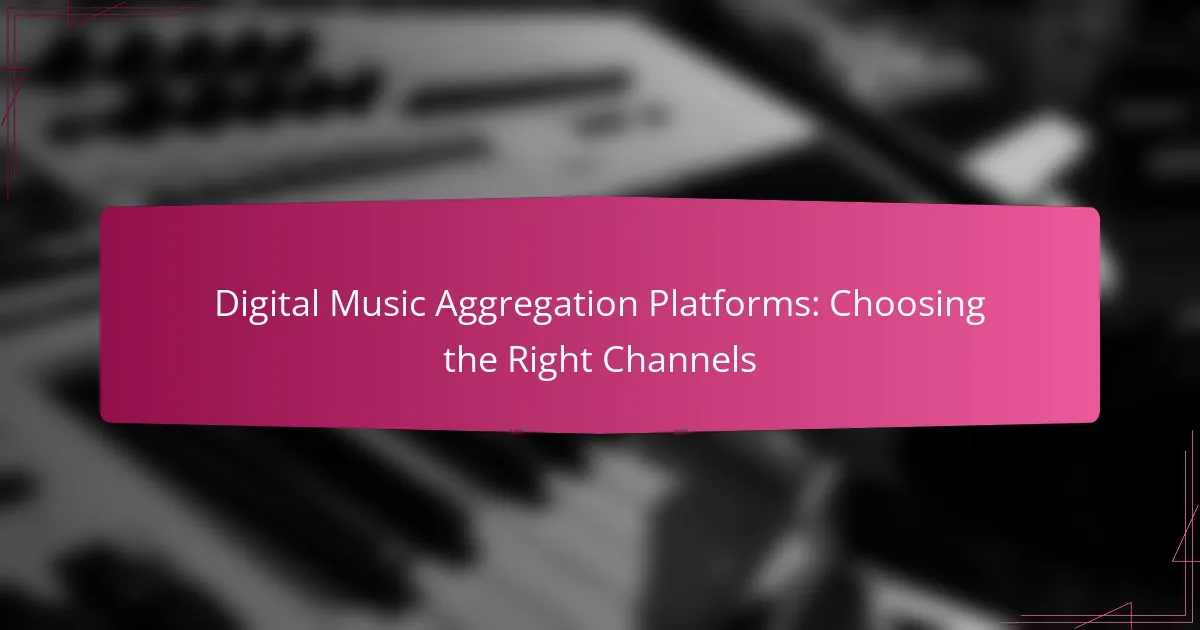Digital music aggregation platforms play a crucial role in helping artists distribute their music across a wide range of streaming services and online stores. With options like DistroKid, CD Baby, and TuneCore, each platform offers distinct features and pricing structures that cater to different artist needs. Selecting the right platform requires careful consideration of factors such as distribution fees, revenue share models, and available tools, as these will directly influence your earnings and distribution strategy.
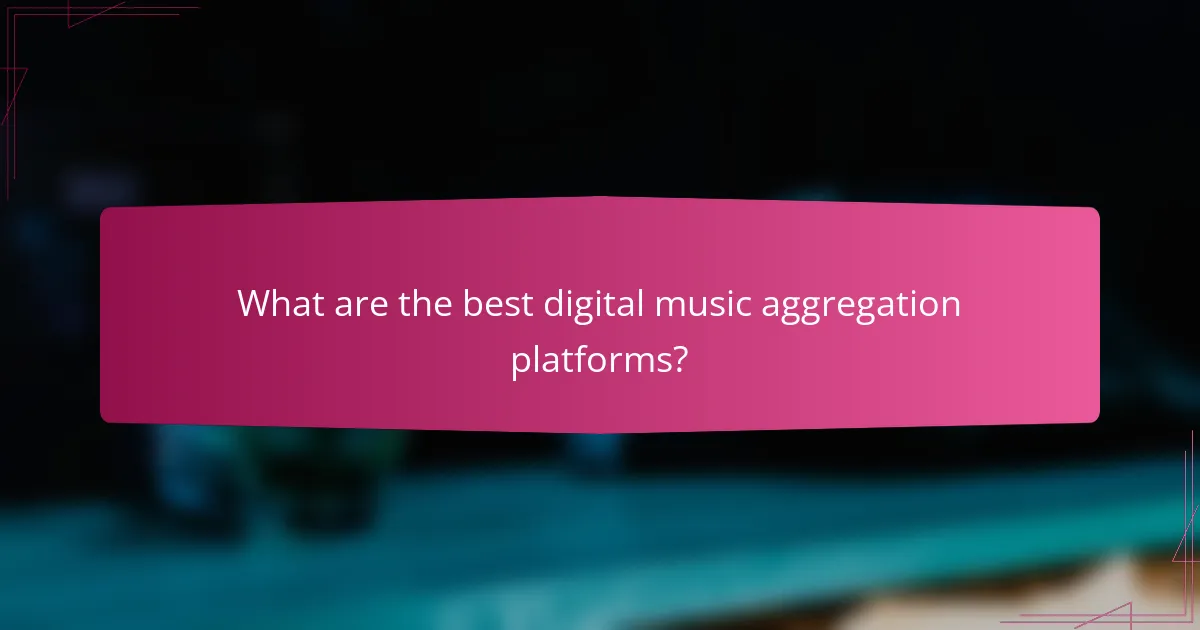
What are the best digital music aggregation platforms?
The best digital music aggregation platforms help artists distribute their music across various streaming services and online stores. Key options include DistroKid, CD Baby, TuneCore, AWAL, and Symphonic Distribution, each with unique features and pricing structures that cater to different needs.
DistroKid
DistroKid is known for its user-friendly interface and unlimited uploads for a flat annual fee, making it a popular choice for independent artists. It allows you to keep 100% of your earnings, which is a significant advantage over many competitors.
However, DistroKid does not offer physical distribution or marketing services, so artists looking for comprehensive support may need to consider additional options. It’s ideal for those who prioritize simplicity and cost-effectiveness in digital distribution.
CD Baby
CD Baby operates on a pay-per-release model, charging a one-time fee for each album or single you distribute. This platform is well-regarded for its extensive distribution network, including access to physical sales through CD and vinyl.
CD Baby also provides additional services like sync licensing and promotional tools, which can be beneficial for artists seeking to expand their reach. However, artists should be aware of the commission fees on sales, which can impact overall earnings.
TuneCore
TuneCore is another leading platform that charges an annual fee for music distribution, allowing artists to retain 100% of their sales revenue. It offers a range of services, including publishing administration and detailed sales reporting.
While TuneCore provides robust analytics and global distribution, the annual fees can add up, especially for artists with multiple releases. It’s best suited for those who want comprehensive tracking and support for their music career.
AWAL
AWAL is a unique platform that combines distribution with artist development services. It operates on an invite-only basis, which means it selectively partners with artists who show potential for growth.
AWAL offers a range of services, including marketing support and access to industry professionals, making it a good choice for artists looking for more than just distribution. However, the exclusivity may limit access for some independent musicians.
Symphonic Distribution
Symphonic Distribution focuses on independent artists and labels, providing tailored distribution solutions along with marketing and royalty collection services. They offer a flexible pricing model based on the artist’s needs and goals.
This platform is particularly beneficial for those looking for personalized support and a strong presence in both digital and physical markets. Artists should consider their specific distribution needs and budget when choosing Symphonic Distribution.
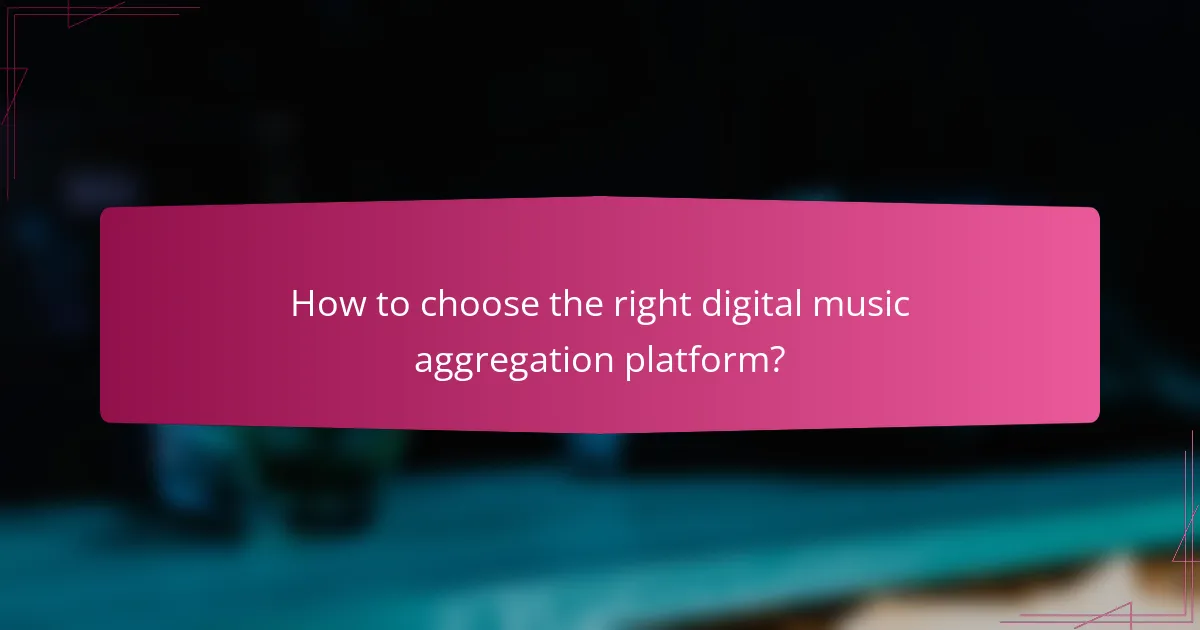
How to choose the right digital music aggregation platform?
Choosing the right digital music aggregation platform involves evaluating several key factors, including distribution fees, revenue share models, and available features. These elements will significantly impact your earnings and the effectiveness of your music distribution strategy.
Consider distribution fees
Distribution fees are the costs associated with getting your music onto various platforms. These fees can vary widely, ranging from a flat annual fee to a percentage of your earnings. Some platforms may charge a one-time fee per release, while others might offer unlimited distribution for a monthly or yearly subscription.
When assessing distribution fees, consider how often you plan to release music. If you release frequently, a platform with a flat fee may be more cost-effective. Conversely, if you release sporadically, a pay-per-release model might suit you better.
Evaluate revenue share models
Revenue share models determine how much of your earnings you keep after the aggregator takes its cut. Common models include a 70/30 split, where you receive 70% of the revenue, or a 90/10 split, which is more favorable for artists. Understanding these splits is crucial for maximizing your income.
Look for platforms that offer transparent revenue sharing and minimal hidden fees. Some aggregators may also provide additional services, such as marketing support, which can influence the overall value of their revenue share model.
Assess available features
Different digital music aggregation platforms offer various features that can enhance your distribution experience. Key features to consider include analytics tools, promotional support, and the ability to distribute to niche platforms. Some platforms may also provide options for pre-save campaigns or playlist pitching.
Evaluate which features are most important for your music career. For example, if you prioritize data insights, choose a platform that offers robust analytics. If marketing is your focus, look for aggregators that provide promotional tools to help you reach a wider audience.
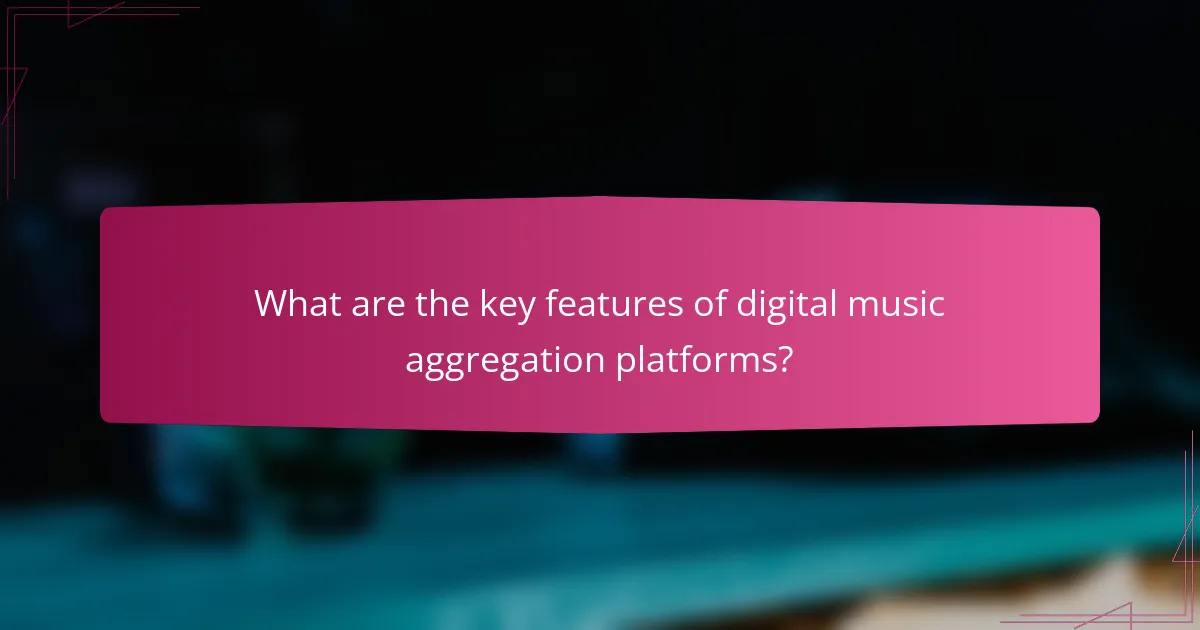
What are the key features of digital music aggregation platforms?
Digital music aggregation platforms serve as intermediaries that distribute music to various streaming services and online stores. Key features include access to multiple distribution channels, analytics tools for tracking performance, and services for royalty collection.
Music distribution channels
Music distribution channels are the platforms where your music will be available for listeners, such as Spotify, Apple Music, and Amazon Music. When choosing an aggregator, consider the breadth of their distribution network and whether they include niche platforms that cater to specific audiences.
Some aggregators may offer a flat fee for distribution, while others take a percentage of your earnings. Evaluate these options based on your expected sales and streaming volume to find the most cost-effective solution.
Analytics and reporting tools
Analytics and reporting tools provide insights into how your music is performing across different platforms. Look for features that offer real-time data, including streaming numbers, listener demographics, and geographic performance.
Effective analytics can help you tailor your marketing strategies and make informed decisions about future releases. Choose a platform that presents data clearly and allows you to export reports easily for further analysis.
Royalty collection services
Royalty collection services ensure that you receive payments for your music streams and sales. Aggregators typically handle the collection and distribution of royalties, which can vary based on the platform and the terms of your agreement.
It’s essential to understand the fee structure and payment timelines of your chosen aggregator. Some may charge upfront fees, while others take a percentage of your royalties, so compare these options to maximize your earnings.
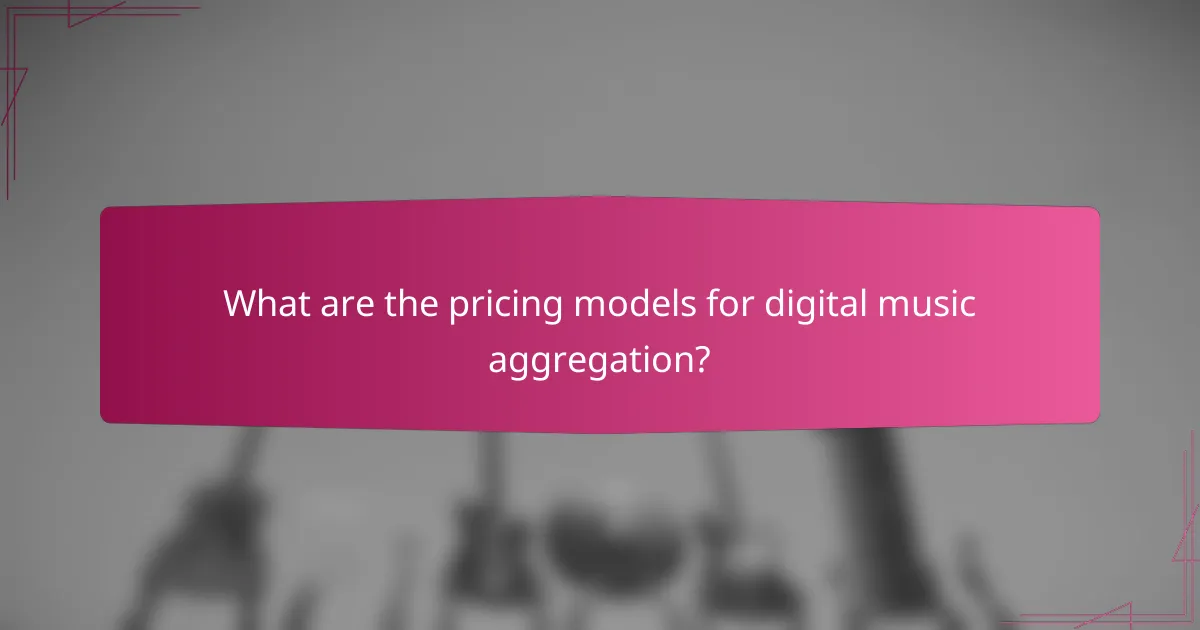
What are the pricing models for digital music aggregation?
Digital music aggregation platforms typically use three main pricing models: annual subscription fees, per-release fees, and commission-based models. Each model has its own advantages and considerations, making it essential for artists and labels to choose the one that best fits their distribution needs and budget.
Annual subscription fees
Annual subscription fees involve a fixed cost paid once a year for access to the aggregation service. This model is beneficial for artists who plan to release multiple tracks or albums within the year, as it often provides unlimited distribution for a single price.
Prices for annual subscriptions can vary widely, generally ranging from around $50 to several hundred dollars, depending on the platform’s features. It’s important to assess what additional services are included, such as marketing tools or analytics, which can enhance the value of the subscription.
Per-release fees
Per-release fees charge artists for each individual track or album they distribute. This model is suitable for those who release music infrequently or want to test the waters with a few singles before committing to a larger distribution strategy.
Fees typically range from $10 to $50 per release, depending on the platform. While this model can be cost-effective for occasional releases, it may become expensive for artists with a more active release schedule, so careful budgeting is essential.
Commission-based models
Commission-based models take a percentage of the revenue generated from music sales or streams. This approach aligns the aggregator’s success with the artist’s success, as both parties benefit from higher sales.
Commission rates usually fall between 10% and 30% of earnings, depending on the service. Artists should consider their expected revenue and how much they are willing to share, as this model can significantly impact overall earnings, especially for independent musicians.
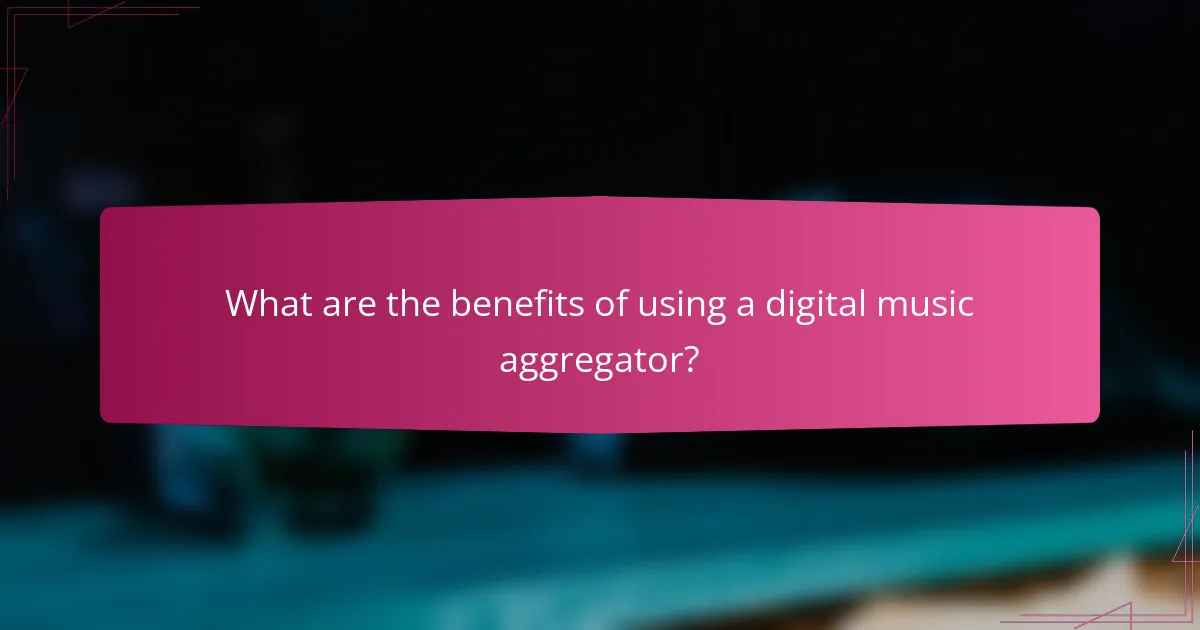
What are the benefits of using a digital music aggregator?
Digital music aggregators streamline the process of distributing music across various online platforms, offering artists and labels a range of benefits. These services simplify the submission process, increase visibility, and often provide valuable analytics to help track performance.
Wider audience reach
Using a digital music aggregator allows artists to distribute their music to numerous streaming platforms and online stores simultaneously, significantly expanding their audience reach. Instead of submitting tracks individually, aggregators can push music to major services like Spotify, Apple Music, and Amazon Music, among others.
By leveraging an aggregator, musicians can tap into diverse listener demographics across different platforms. This means reaching fans in various regions, which is especially beneficial for independent artists looking to grow their fan base without the resources of a major label.
When choosing an aggregator, consider their network of distribution partners. Some may offer access to niche platforms that cater to specific genres or regions, enhancing your chances of connecting with targeted audiences. Always review the terms and fees associated with each platform to ensure you’re maximizing your reach effectively.
